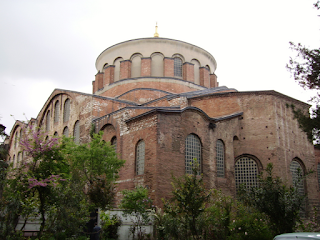i) The story of the Bible centers on the creation, fall, and redemption of man. As such, the theory of evolution (i.e. macroevolution, universal common descent) poses the greatest or most direct challenge to Christian theology.
Evolution challenges the first two planks–and by implication–the third. If man is not God's special creation, if original sin is a myth, then what did Christ redeem us from?
ii) However, it may be providential that not only is evolution the most challenging scientific theory, but the most challenged scientific theory. The theory that poses the greatest challenge to Christian theology is, in turn, the most scientifically challenged major theory.
Naturally, evolution has always been theologically controversial, but what's remarkable is that it's always been scientifically controversial. For instance, you have secular scientists who grant the fact of evolution, but are critical of the theoretical underpinnings.
iii) There may also be a parallel between the hard problem of consciousness and biology. Some philosophers contend that as a matter of principle, mental experience has properties which can never be captured by a physical state. We could map the human brain all the way down to the quantum level, but the categorical divide would still remain. The problem of consciousness is insoluble given physicalism.
Of course, that's hotly contested, but it's contested by men with an absolute commitment to physicalism.
Likewise, there are intelligent-design theorists who contend that an unguided process cannot develop the organisms we find in nature.
Some go further and content that even a guided incremental process cannot bridge the gap. Nature can't assemble an organism one piece at a time. It has to start with something more than individual pieces.
Like robotics. A robot can assemble another robot, but a robot can't assemble itself. At best, a partially assembled robot might be able to complete the process.
My aim is not to argue the point, but simply note that if that's true, then the theory of evolution will never successfully shake off the fundamental challenges to its adequacy or feasibility. Even in principle, it can't get the job done.





